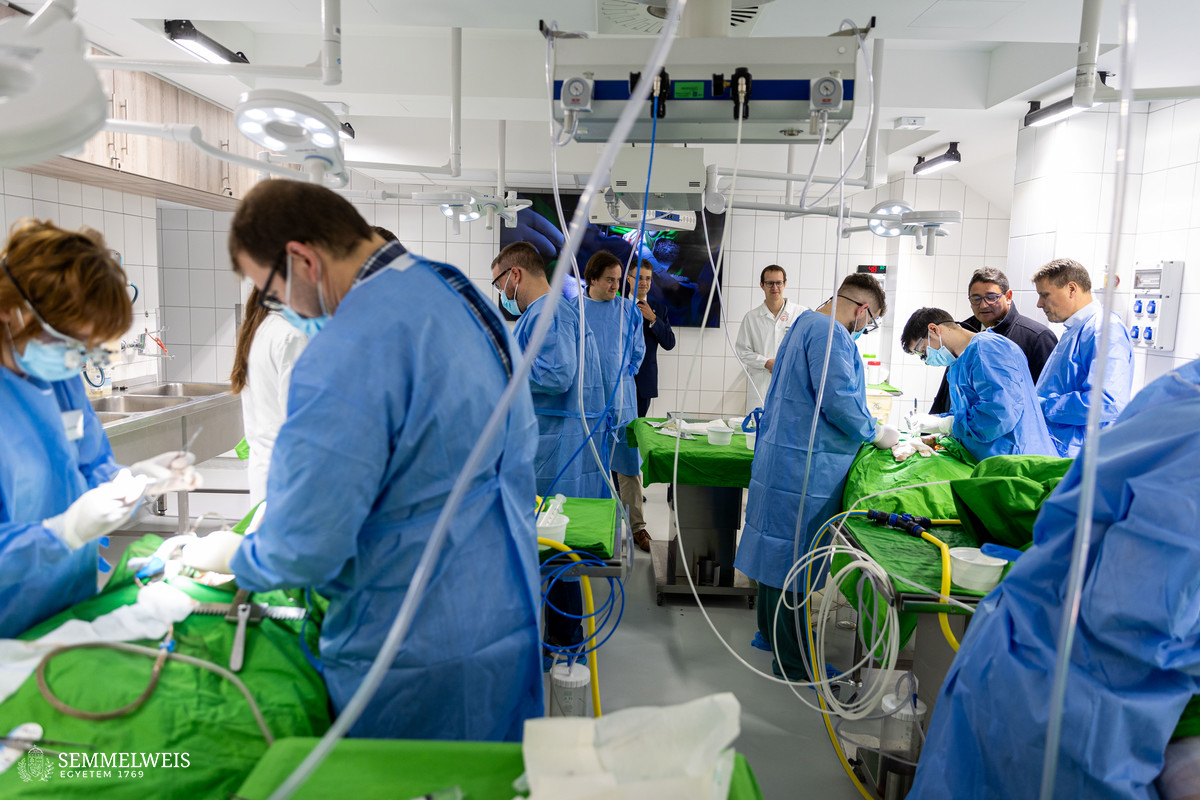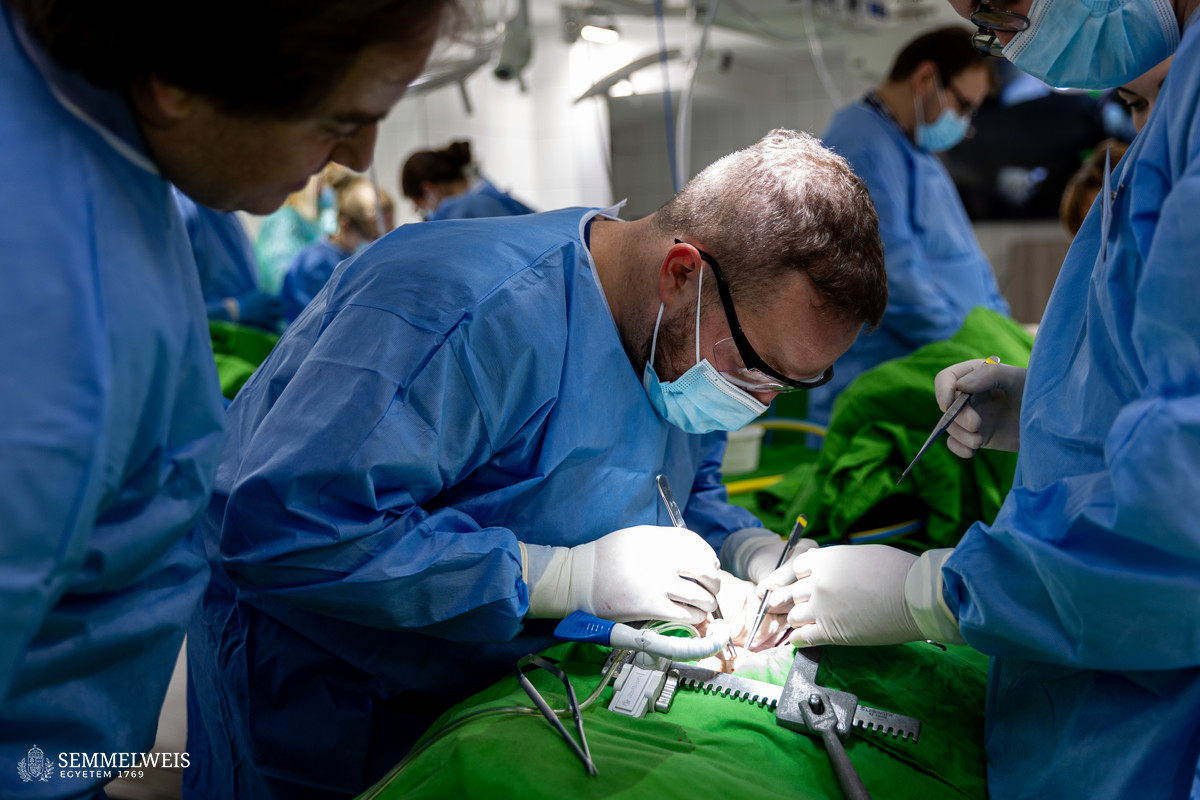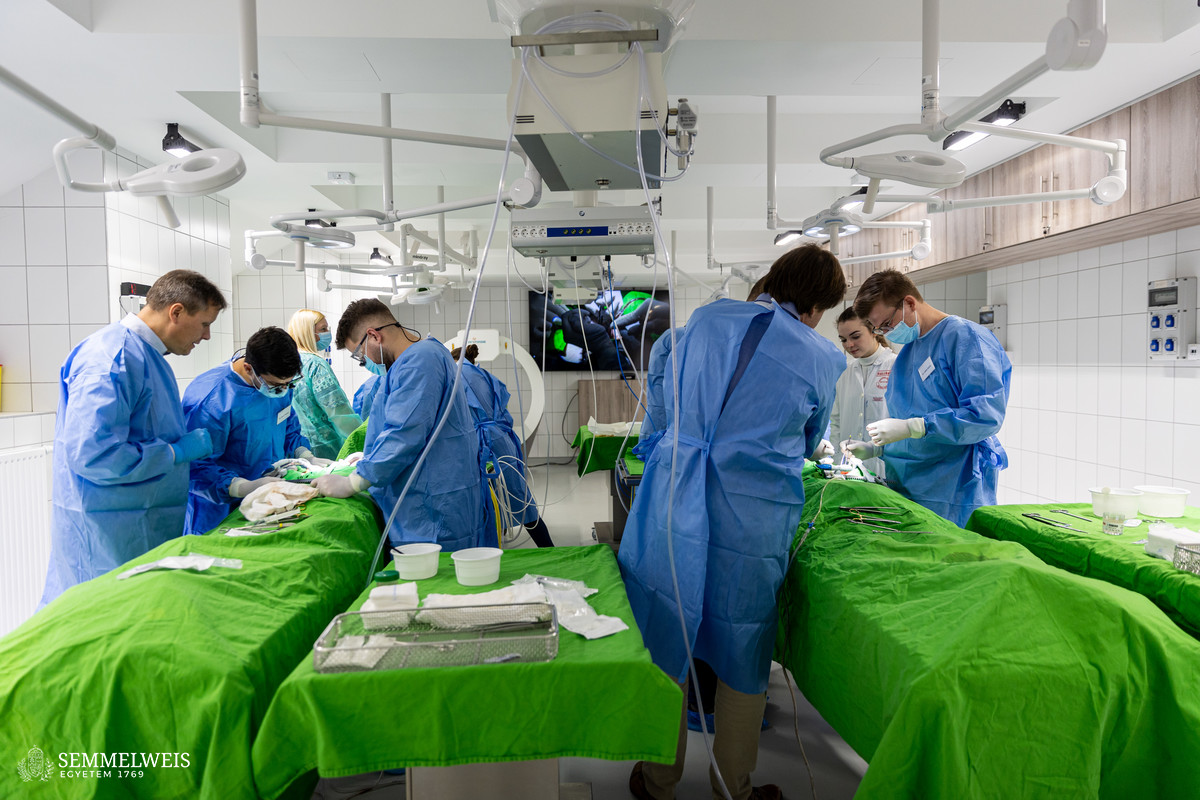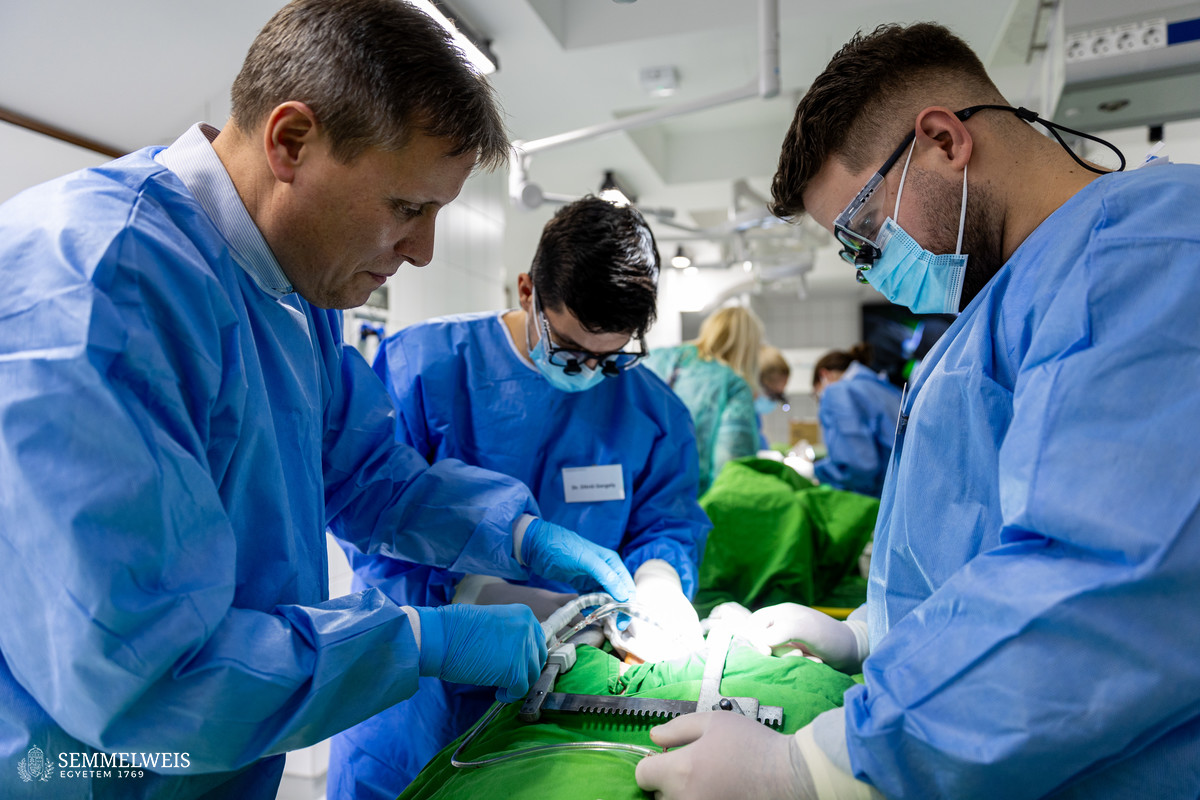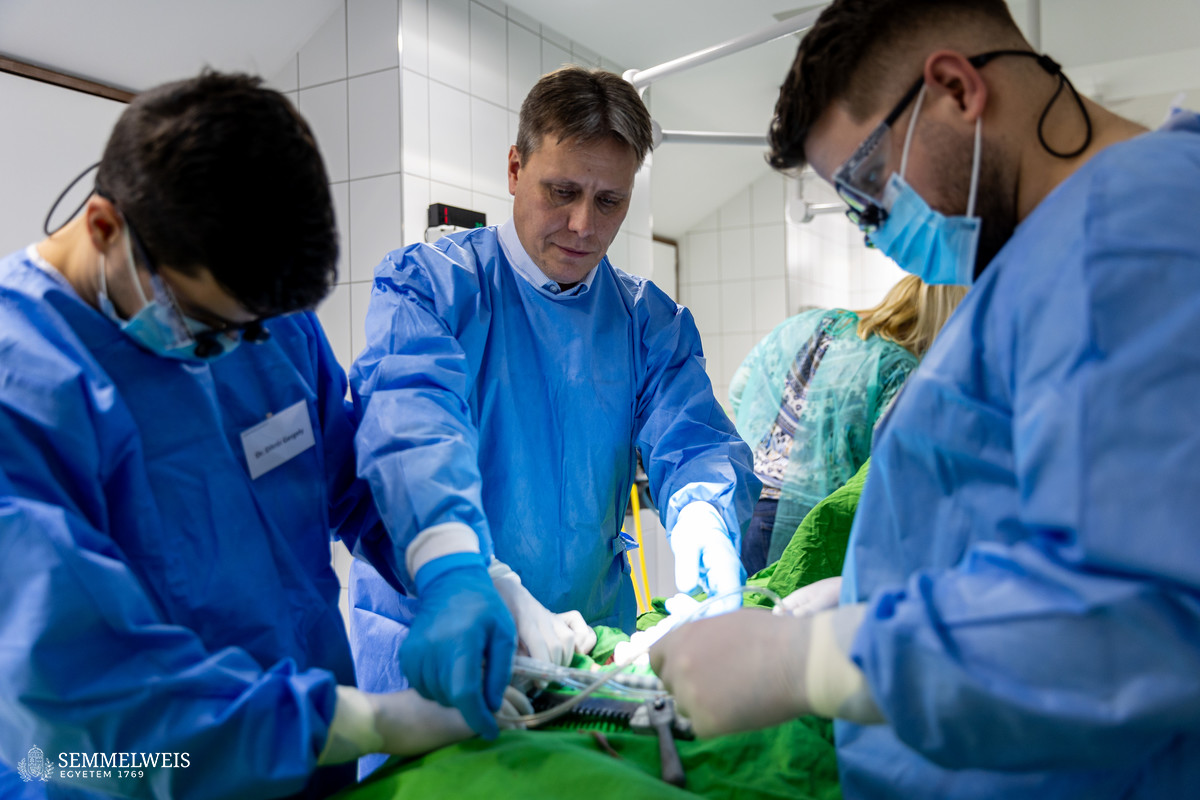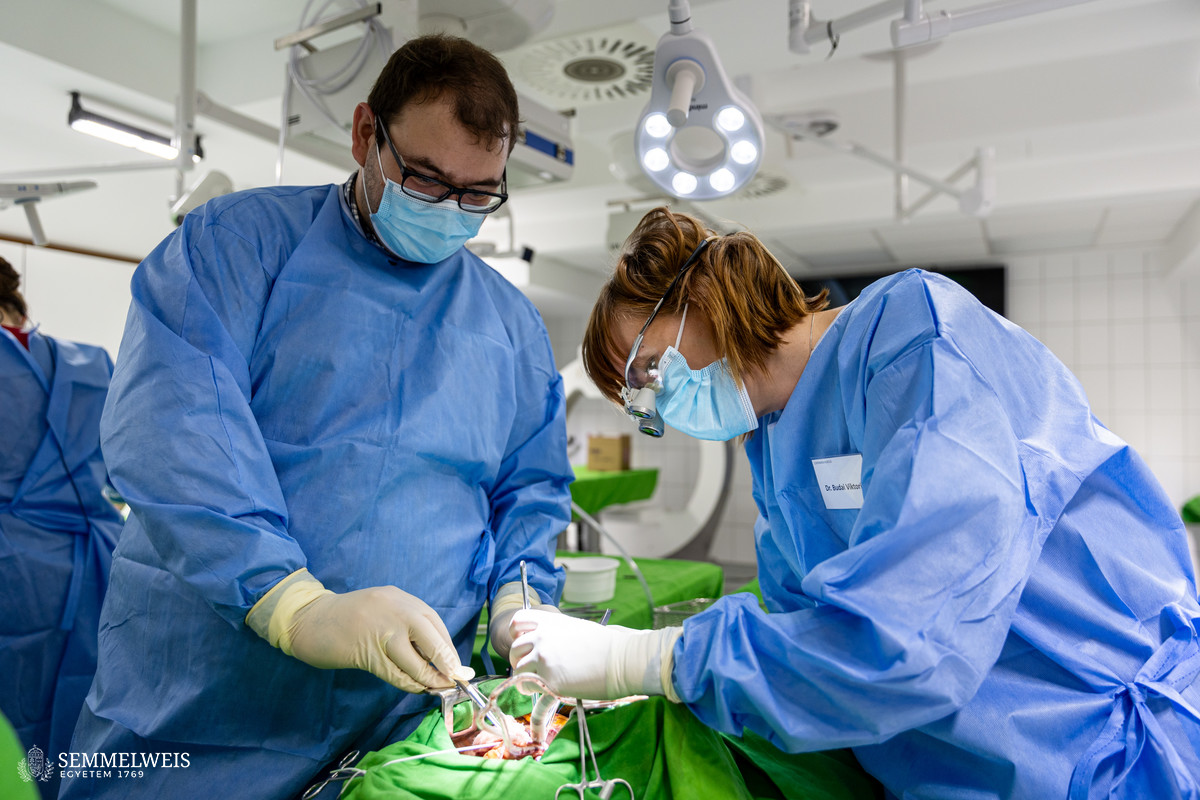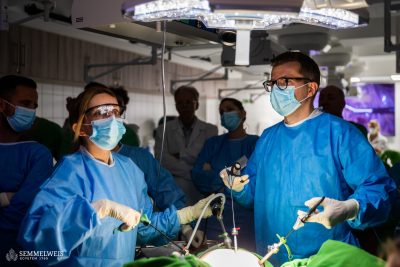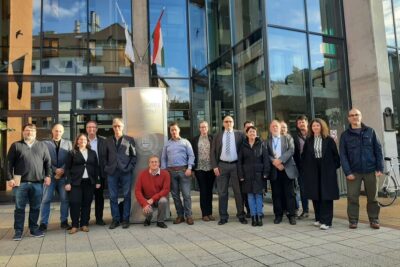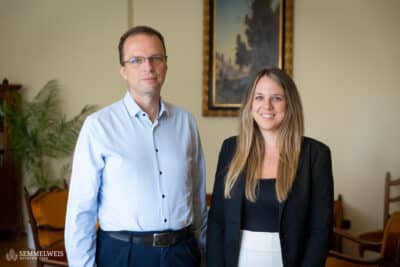Due to its complexity and multi-step nature, cardiac surgery is regarded as the most difficult to teach. Even within cardiac surgery, coronary surgery training is particularly challenging, as the microsurgical technique must be applied to a beating heart, which requires special skills, as Dr. István Hartyánszky, one of the course leaders of the cadaver beating-heart surgery course, told our website. Dr. István Hartyánszky, Consultant Cardiac Surgeon, Specialty Lead Head Surgeon at the Városmajor Heart and Vascular Center, and Head of the Department of Cardiac Surgery, pointed out that the training, which was part of a cadaver training course and was held in the Interdisciplinary Cadaver Operating Room of the Institute of Anatomy, Histology and Embryology, provided a unique opportunity to practice coronary artery bypass grafting. The institute’s experts developed a special tissue fixation technique and a device that mimics the heartbeat, making cadavers lifelike models for participants to work on. As Dr. István Hartyánszky stressed:
As a result of the unique fixation technique, the tissues remain soft and the device attached to the body generates lifelike movements, providing a completely realistic, risk-free environment for cardiac surgeons to practice advanced suturing techniques and grips, which is a huge step forward.
The course leader emphasized that this was the only way to practice how to stabilize the surgical site, insert special sutures to ensure bloodlessness, perform surgical exploration, and adopt the suture technique required for the beating heart itself.
The uniqueness of the course, in addition to its exceptional subject matter, was its excellent teacher-student ratio, ensuring personalized help for everyone. The number of participants per course was capped at eight, so at each of the four operating tables, two participants were able to work with the assistance of an expert, under the supervision of the course leaders, Dr. István Hartyánszky and Dr. Tamás Ruttkay, Assistant Professor at the department. The one-day training started with a 90-minute theoretical introduction, during which we reviewed the current status of coronary artery surgery, the latest guidelines, and the technique of beating-heart coronary surgery. This was followed by a shorter morning session and a longer afternoon hands-on training session. Everyone could practice until they mastered the beating heart technique. The participants were typically able to sutureeight to ten anastomoses each, added Dr. István Hartyánszky.
The two cardiac surgical training courses held so far as part of the cadaver course series announced at OFTEX, the Hungarian medical doctor training system, have attracted participants from the three Budapest-based and three other Hungarian cardiac surgery centers, with every second surgeon coming from Semmelweis University. “We’ve received positive feedback, everyone enjoyed the training. Participants appreciated the immediacy and the very accurately simulated surgical environment, in which they could practice sutures and grips without stress. There was no time pressure on the participants, which is particularly important for this type of surgery in real-life situations, so the focus was on mastering the technique as precisely as possible.” Regarding the future of the course, Dr. István Hartyánszky said that they planned to offer the course twice a year, and they would like to become a regional training center. The course primarily welcomes cardiac surgery residents, but beginners are also welcome to apply, as well as pre-specialists and specialists with experience in performing ‘non-beating’ heart coronary artery bypass grafting, so basically anyone who would like to learn the beating-heart technique, emphasized Dr. István Hartyánszky. A video of the unique cardiac surgery course is available here.
The selfless donation of corpses for the purposes of medical education and research is the be-all and end-all of our institute’s mission, for which I believe we will never be able to express our gratitude enough. – Dr. Tamás Ruttkay
However, it is the background work undertaken by its working group that makes the profile a regional cadaver training center, with the full support of Director Dr. Alán Alpár. “It is a rewarding experience to work together with clinical colleagues to develop a routine and regularly rerun a course, as a result of which we can offer something unique that is not available anywhere else in the world or only in a few centers,” Dr. Tamás Ruttkay noted. The Interdisciplinary Cadaver Operating Room has been offering accredited medical specialist and professional training programs for 1.5 years, drawing on a decade and a half of experience in training courses in various locations. Throughout the course season, the operating room hosts versatile activities that require close professional control and hard work.
The team not only places the cadaver on the operating table on the morning of the course but even prepares it for completely different interventions only a few days apart. One day they prepare the gastrointestinal tract for endoscopic training, the next day they fill the upper-limb vessels for hand surgeons, then they spend a day ‘operating’ to connect the heartbeat-mimicking device to each cadaver and start training bypass surgery the upcoming day. Dr. Tamás Ruttkay summed up the collaboration and his credo by saying “Professor Hartyánszky and I have known each other for a long time, and we have been speaking the same language from the very beginning. I am glad that he has set the framework for the professional training, has taken the lead and, with our cadaveric model, we have been able to launch a course that is the fruit of a collaboration within the university. What I’m most proud of is that every day, our team is able to create something innovative, something new, trying to provide the most realistic cadaver model for every clinical profile, such as modeling an artificial tumor, a blocked airway or, in this case, a beating heart. Having seen the sparkle in the eyes of the medical students attending the courses, I strongly believe that all of these efforts have a purpose and a future.”
The Interdisciplinary Cadaver Operating Room, which accommodates the cadaver course series, was inaugurated in November 2022 in the Department of Anatomy, Histology and Embryology. The unique training series is based on a new tissue fixation technology developed by the department’s embalmer, Viktor Pankovics. The equipment necessary for the beating-heart surgical training is linked to Dr. Tamás Ruttkay, also a member of the department. So far, the fully booked training series has included advanced airway management training, a gynecology-focused course, a gastroenterology endoscopy course, liver and pancreatic surgery training, dental implantology, and training in upper limb surgical exploration, alongside the recent beating-heart coronary surgery course. In spring 2024, the range of accredited cadaver training programs was extended to include pulmonary endoscopy and the treatment of upper limb nerve injuries. A new course will be launched in the autumn, featuring one of the latest techniques in laparoscopic colorectal surgery.
Anita Szepesi
Translation: Judit Szabados-Dőtsch
Photos by Attila Kovács – Semmelweis University
